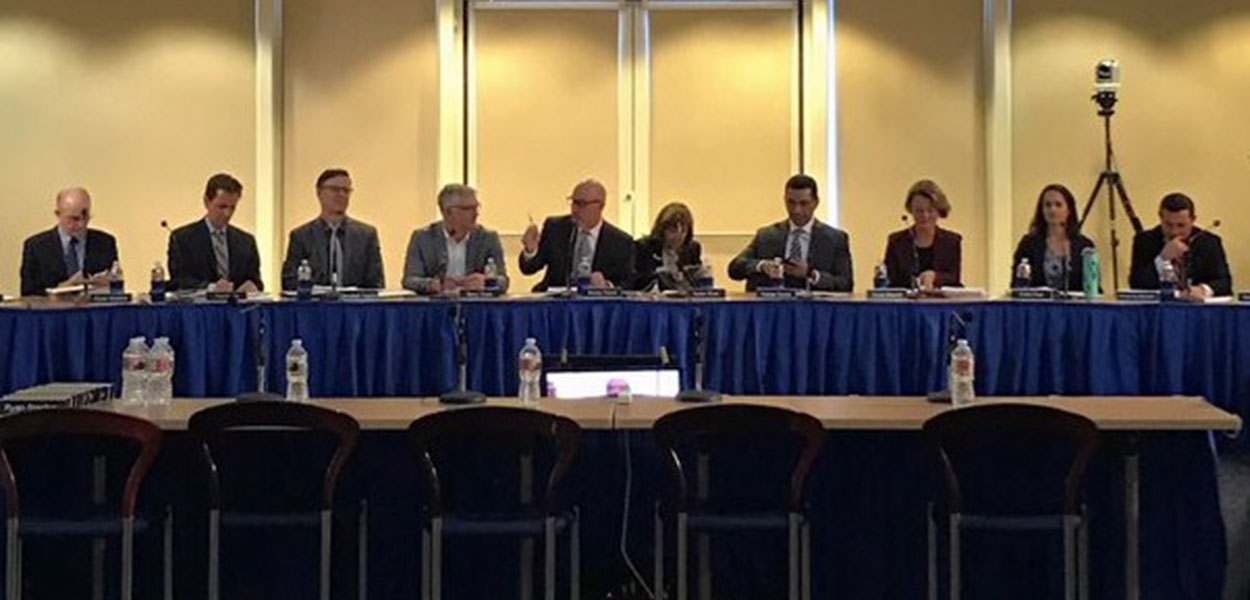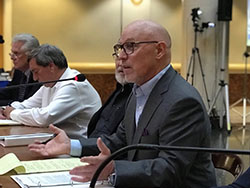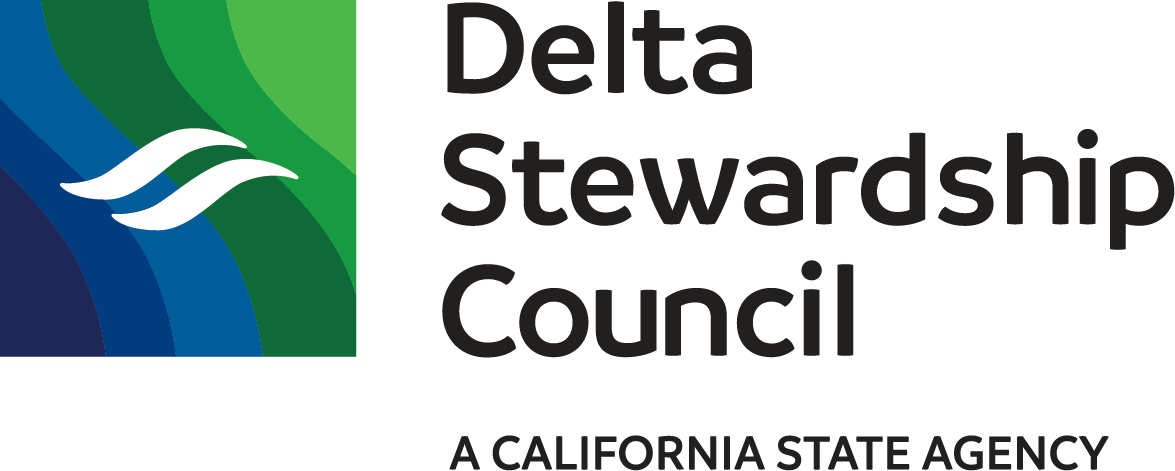
The Delta Plan Interagency Implementation Committee facilitates Delta Plan implementation through support of shared national, statewide, and local goals.
Improving Collaboration Across Agencies is Key to Meeting Challenges Ahead
December 19, 2018
By Randy Fiorini
The November 2018 Delta Plan Interagency Implementation Committee (DPIIC) meeting featured a presentation from the independent, non-partisan, federal Government Accountability Office (GAO) that reviewed federal involvement in restoration in the estuary.The report included several recommendations for improving coordination among State and federal agencies, developing a revised framework to guide federal action in the watershed, and renewing efforts to track expenditures for performance management.
The report emphasized the importance of DPIIC and the forum it provides for meaningful communication and coordination. Continuing to use DPIIC as a venue for public discussion of State and federal priorities in the region, as well as increased coordination across the Bay, Delta, and watershed should be a high priority for every agency seated at the DPIIC table.
It has been my honor to serve as chair of the Council and DPIIC for five years. As my term of service has come to an end, I’m writing today to call attention to the great accomplishments that have been achieved through the cooperative work of this interagency committee and to offer some thoughts about how the effectiveness of DPIIC can be enhanced.
Over the past five years, the semiannual meetings of the 18 member DPIIC agencies have directly addressed the following priority topics: ecosystem restoration, streamlined permitting, best available science, Delta levee investments, and agency efforts to implement the Delta Plan
DPIIC has grown to include 18 agencies working together to implement the Delta Plan, with the recent addition of the San Francisco Bay Conservation and Development Commission (BCDC). BCDC works regularly with federal and State agencies in the Bay, as well as the Suisun Marsh, where their work directly overlaps with efforts in the greater Delta. The addition of BCDC to the committee is in recognition of the critical connections between the Bay and the Delta and the need for continued and increased collaboration to achieve policy priorities.
With each meeting, the agenda featured activities, plans, and projects related to implementing the Delta Plan, the State’s only enforceable long-term management plan for the Delta; and the furtherance of the coequal goals set by the Legislature: increased statewide water supply reliability and a restored and enhanced Delta ecosystem, all done in a manner that protects and enhances a unique and evolving Delta.
DPIIC’s accomplishments over the past four years are examples of collaborative endeavors that have strengthened the State and federal nexus to achieve something better than we had before:
- Hosted, with the U.S. Geological Survey, the Science Enterprise Workshop (SEW), which featured science leaders and science policy experts from the Florida Everglades, Chesapeake Bay, Great Lakes, Coastal Louisiana, Puget Sound, and the California Bay-Delta. The SEW was designed to highlight and discuss how these different systems were addressing funding, governance, and science.
- Established the interagency Delta Agency Science Workgroup (DASW) to provide guidance on key science initiatives identified by State and federal managers.
- Endorsed the High-Impact Science Actions (HISA), a short list of high‐impact, multi‐benefit science actions for near‐term implementation in 2015‐2016 reflecting a cross‐agency understanding of priority science needs in the Delta. The HISA has helped in coordinating science funding.
- Endorsed the complete Science Action Agenda, a four-year science to-do list for the Delta that prioritizes and aligns science actions to inform management decisions, fills gaps in knowledge, promotes collaborative science, builds the science infrastructure (e.g., technology, staff, funding, etc.), and achieves the objectives of the Delta Science Plan.
- Created a venue for regularly reviewing progress of California EcoRestore to get restoration projects on the ground in the Delta.
- Helped to launch the Integrated Modeling Steering Committee and Structured Decision Making Forum, intended to enable better data-driven decisions based on best available science.
- Championed the pursuit of regional and multi-agency permitting in the Delta.
- Endorsed the updated Delta Science Plan, in concept, which provides a framework for how to conduct science in the Delta.
With five years under our belt, and after reflecting, it’s now time to look to the future. Last month the federal government released the Fourth National Climate Assessment, noting that the environment we are managing is changing faster than ever. Climate change impacts in the Delta will increase risk to water supply reliability, limit opportunities to restore habitat, and present an overwhelming threat to the livelihood of those in the Delta. It’s time to double-down and take bold steps across agencies, engage in deep collaboration, and forge enduring and outcome-focused partnerships to achieve our goals. In light of these challenges, here are some of the most pressing questions that I see ahead:
How can we strengthen State and federal efforts across the Bay, Delta, and upper watershed to more effectively plan and implement restoration, fund and use best available science, and truly embrace adaptive management?
What are the obstacles to ecosystem restoration and how can State and federal agencies, nongovernmental organizations, public water agencies, and other stakeholders identify and address these obstacles?
How can the DPIIC member agencies strengthen the Bay-Delta Science Enterprise to establish and maintain the strong science underpinnings we need to make strong and defensible decisions?
What can be done to ensure that representation at each DPIIC meeting includes the highest ranking leader from each agency?
There were many takeaways from the November DPIIC meeting and discussion, but the most salient focused on action. DPIIC has already made progress on these, but I encourage you to continue momentum on:
- Furthering and strengthening the federal and State nexus is paramount: let’s explore and build upon the connections in the Bay, the Delta, and the full watershed.
- Supporting coordinated ecosystem restoration based on best available science is a must. And it’s time to dive into and find solutions for the continued challenges around funding for operations and management, permitting, monitoring, and messaging.
- The vision of One Delta, One Science will only happen if we all support a coordinated approach to science in the form of a Delta Science Plan that can be amplified with more issue-specific science plans.
- Eradicating nutria, an invasive, destructive, and prolific rodent, is a near-term priority. The nutria issue is urgent; there’s no time to lose. The DPIIC agencies are integral to elevating this issue and directing more resources to where they’re needed.
With a new year and a new administration, comes new opportunities. I welcome Susan Tatayon as the new Chair of both the Council and DPIIC, and BCDC as our newest member.
Let’s build on this recognition and cross-agency support, dive in, and work collectively to find solutions to these complex issues.

About the Author
Randy Fiorini is currently Vice-Chair of the Delta Stewardship Council, after serving as Chair from 2014-2018. He was born in Turlock where he was raised on his family’s tree fruit and wine grape farm. After graduating from Cal Poly San Luis Obispo in 1975, Fiorini returned to Turlock to manage partner responsibilities for Fiorini Ranch. He was elected Director of the Turlock Irrigation District in 1992, a position he held for 16 years. He has also served as President of the San Joaquin River Group Authority, the California Farm Water Coalition, and the Association of California Water Agencies. Fiorini was first appointed to the Council in 2010 and reappointed in 2018; his current term expires in February 2020.

